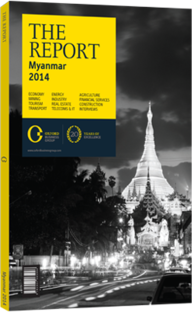Ahead of the game: The state and the private sector are both aiming to provide more online services
International observers and Myanmar’s government accept that to unlock the country’s potential, both the public and private sectors must embrace digital technology. Yet the state may take longer to adapt than the market-driven private sector in the coming years.
Banking & Commerce
Closely following the ICT developments is Myanmar’s banking industry. An efficient and well-regulated banking system is another essential pillar of the country’s development, and the sector is already engaging new technologies in anticipation of the surge in internet usage. The Japanese government is assisting the Central Bank of Myanmar in implementing a $384m network to assist financial transactions throughout the country. The system will be a cloud-based, high-speed link between the capital, Naypyidaw, and the two largest cities – Yangon and Mandalay – and is expected to aid traditional banking operations, as well as provide routes for more services such as internet and mobile banking that can access a wider range of consumers without the high costs of physical branches and ATMs. Due to a general mistrust of local banks, most savers invest in property or keep cash rather than commit savings to the banks. However, this could change with the introduction of new technologies and services that will entice more citizens to use the formal banking system. Alternative online payment systems such as the Paypal equivalent for Myanmar, EasyPay, will also unlock the nascent e-commerce market, which has been on the rise in other parts of the world, especially China, which now has an online retail market worth $190bn. “People did not appreciate the back-end processes involved in web development,” said U Wai Phyo Thu, executive director of Creative Web Studio, which offers online products. “But people are beginning to come round a lot more to the idea of doing business on a website.” U Wai Phyo Thu believes that by positioning his firm well in the months to come, he will be primed to benefit from the inevitable influx of online consumer product gateways as firms switch to online payments.
State
The government has been working closely with the Korean International Cooperation Agency (KOICA) to meld ICT into policymaking and legislation through a National ICT Master Plan. Since 2000, the state and KOICA have repeatedly pushed for developments of their internal ministry communications and the creation of an ICT ecosystem for e-governance, e-visa, e-procurement, e-licence, e-payment, an online billing system and others. It is hoped that the move will alleviate the capacity shortage in the state sector and give a clearer voice to the citizens it serves. Since the country has begun to relax its grip on the population and enact more democratic reforms, e-governance can offer an effective and modern path to further engage voters.
The National ICT Master Plan moves from ICT infrastructure development through to industry promotion and regulation, as well as government utilisation. The map outlines potential extensions into agriculture, mining, tourism and all manner of sectors, but recognises the serious threats to the plan posed by a severe lack of ICT education, and the costly infrastructure advancements needed to make the plan a reality. A Myanmar tourist e-visa system is in place, although it is currently in beta testing, and an e-departure form is available for local citizens to declare their intent to leave the country. With regards to e-education, there are two universities currently offering online classes, but it is as yet unclear how successful this platform will be. LOPSIDED?: The government’s plan is behind schedule due to a lack of training. In mid-2013 only three ministries were interactive. Eight had no online presence. No applications for the e-visa were being accepted, and other e-services awaited added connectivity to citizens before they could take effect. The private sector, however, promises to take full advantage of the advancements in communications infrastructure, and leverage the tech space with Myanmar’s growth to create major regional competitors over the coming years. Despite the detailed plans aiming to engage the state, private enterprise still looks set to steal a march on it.
You have reached the limit of premium articles you can view for free.
Choose from the options below to purchase print or digital editions of our Reports. You can also purchase a website subscription giving you unlimited access to all of our Reports online for 12 months.
If you have already purchased this Report or have a website subscription, please login to continue.

